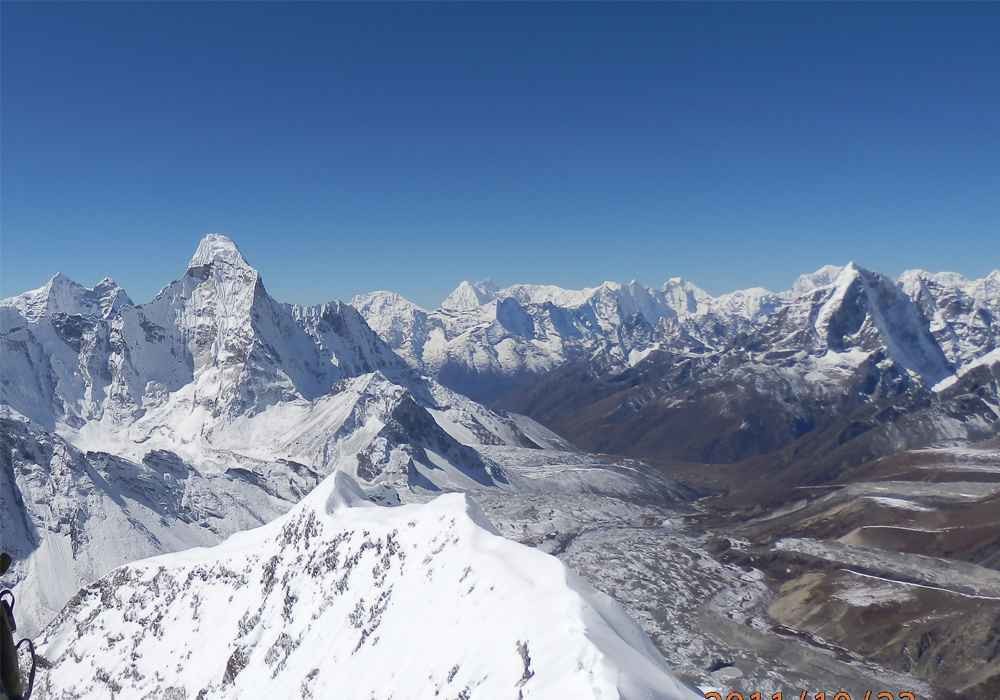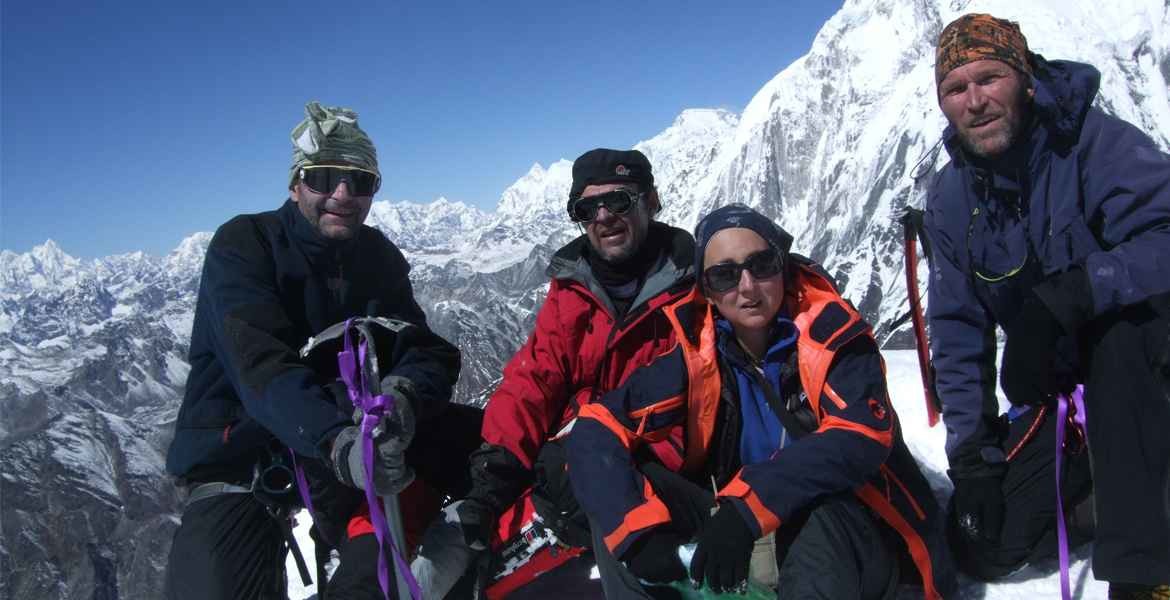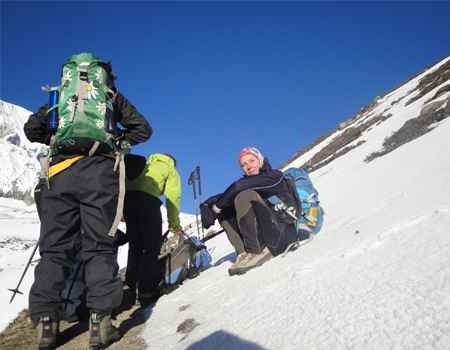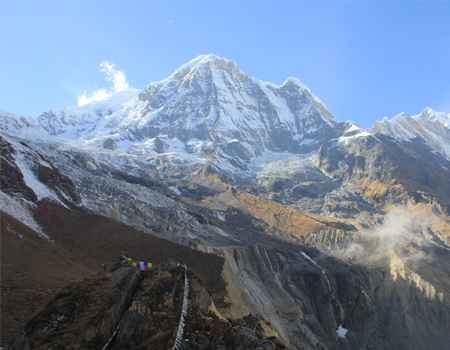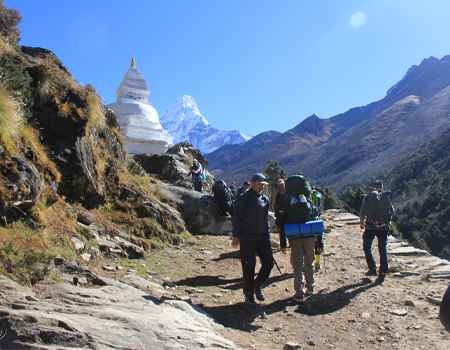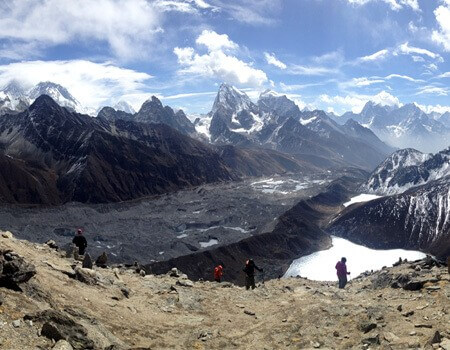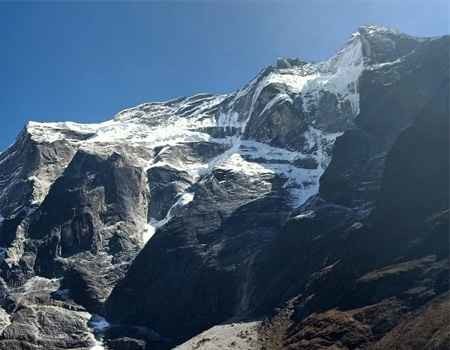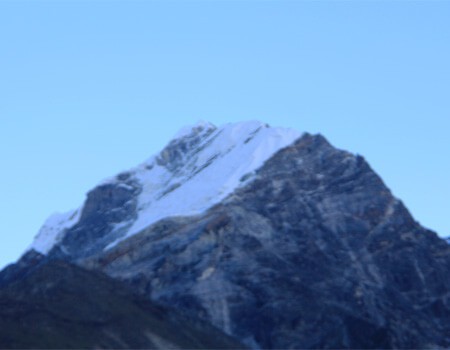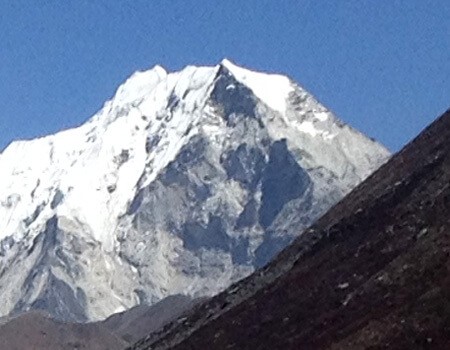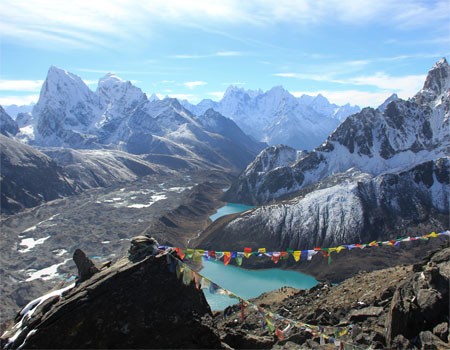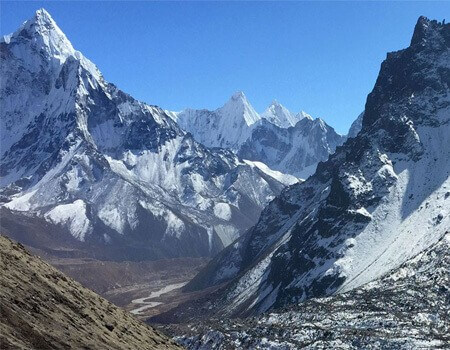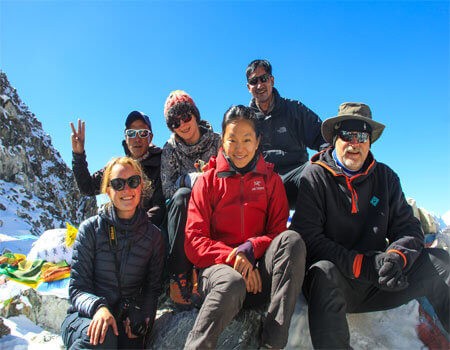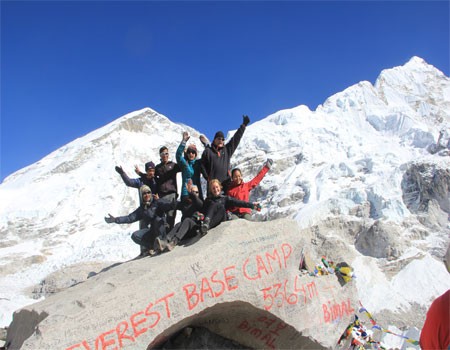Climbing Island Peak (Imja Tse) in Nepal is a dream for many mountaineers. It combines technical mountaineering with breathtaking Himalayan scenery. Standing at 6,189 meters, this expedition requires not only physical endurance but also meticulous preparation, especially when it comes to gear and clothing. This comprehensive guide outlines the essential climbing gear, trekking clothing, and other necessities required for a safe and successful climb.
Frolic Adventure has long experience operating climbing trips to Island Peak in Nepal and truly suggests essential equipment that you need to bring for climbing and trekking to Everest Base Camp before you attempt the expedition of Island Peak. The list of gears in this post will be very helpful to pack well before you head on to the Imja Tse. Please review the details below and manage your affairs accordingly.
We operate Island Peak Adventure. If you haven't booked yet, you are in the right place!
Climbing Gear and Equipment
Mountaineering Boots / High-Altitude Climbing Boots
A sturdy pair of mountaineering boots is the foundation of your climbing gear list. These boots are specifically designed to provide stability, protection, and warmth in high-altitude environments. They should be waterproof, insulated, and compatible with crampons. Proper fit is critical to prevent blisters and ensure comfort during long days on the mountain.
Crampons
Crampons are essential for traction on icy and snowy terrain. Choose models that fit your boots securely and are designed for mountaineering. They should be adjustable and in excellent condition before you start your climb.
Ice Axe / Ice Tools
An ice axe is a multi-purpose tool for self-arrest, cutting steps, and providing balance on steep slopes. For technical sections, you might also need specialised ice tools with more aggressive picks. Select a lightweight, technical ice axe for optimal performance on Island Peak’s icy slopes.
Climbing Harness
A well-fitted climbing harness is vital for safety, especially when navigating fixed ropes and steep sections. Mountaineering harnesses are preferred for their lightweight and packable design, which allows for easy movement and comfort during long climbs. We arrange this for you so you do not have to carry it with you.
Helmet
A climbing helmet is crucial for protecting your head from falling rocks and ice. Choose a lightweight, comfortable helmet that meets safety standards and provides full coverage.
Carabiners (Locking and Non-Locking)
Carabiners connect ropes, harnesses, and other gear. Both locking and non-locking carabiners are available for various applications, including belaying and anchoring.
Quickdraws
Quickdraws are used for clipping into protection points on the route. They consist of two carabiners connected by a short sling and are essential for safe climbing on technical sections.
Ascender / Jumar
An ascender (Jumar) is a mechanical device for climbing fixed ropes efficiently. When weighted, it grips the rope, enabling upward progress on steep terrain.
Descender / Belay Device / Figure 8
A descender, such as a figure-eight or ATC device, is used for controlled rappelling and belaying. These devices provide friction to descend ropes safely.
Climbing Ropes (Dry-Treated Ropes, Fixed Ropes)
High-quality, dry-treated ropes are essential for glacier travel and technical climbing. They repel water and prevent freezing, making them ideal for high-altitude conditions. Fixed ropes are often used on the final ascent of Island Peak.
Tape Sling / Slings / Prusik Loop
Slings and prusik loops are versatile tools for building anchors, extending protection, and self-rescue. They should be lightweight and strong, suitable for a variety of climbing scenarios.
Snow Stakes and Ice Screws
Snow stakes and ice screws anchor ropes on glaciers and snowfields. They provide secure attachment points for protection and belaying.
Ice Hammer
An ice hammer helps cut steps in hard snow and ice and hammer in snow stakes or ice screws. It is beneficial in technical or steep sections.
Technical and Safety Equipment
GPS Device
A handheld GPS device is invaluable for navigation, especially in whiteout conditions or when visibility is poor. Models like the Garmin GPSMAP offer reliable performance in remote mountain environments.
Compass and Maps
A compass and detailed topographical maps are essential backups for navigation. They do not rely on batteries and can be used in any weather condition.
Satellite Phone / Two-Way Radios
Communication is critical in the mountains, where mobile networks are unreliable. A satellite phone or two-way radio allows you to stay in touch with your team and call for help in emergencies.
Headlamp
A powerful headlamp is necessary for early morning summit attempts and navigating in the dark. We recommend choosing a waterproof, high-lumen model with long battery life, such as the Ledlenser HF8R Signature.
First Aid Kit
Your first aid kit should include bandages, gauze, medications for altitude sickness, anti-nausea drugs, pain relievers, and other emergency supplies. It is a vital part of your safety equipment.
Portable Oxygen (Emergency Use)
Portable oxygen can be a lifesaver in cases of severe altitude sickness or unexpected emergencies. It is not always required, but having it as a backup is highly recommended.
Clothing and Personal Items
Base Layers (Moisture-Wicking)
Start with a moisture-wicking base layer made from merino wool or synthetic fibres. This layer keeps you dry and comfortable by moving sweat away from your skin.
Insulating Layers (Fleece or Down Jacket)
An insulating layer, such as a fleece or down jacket, provides warmth without adding excessive bulk. Fleece is breathable and quick-drying, while down offers a superior warmth-to-weight ratio.
Outer Layers (Waterproof, Windproof Shell)
A waterproof and windproof outer shell is your first line of defence against the elements. Look for jackets and pants with breathable, durable fabrics that allow for freedom of movement.
Gloves (Waterproof, Insulated)
Protect your hands with waterproof, insulated gloves for cold conditions and a thinner pair for milder weather. Gloves should allow for dexterity and protect against frostbite.
Beanie, Balaclava, or Thick Hat
A warm hat, balaclava, or thick beanie is essential for retaining heat and protecting your head and ears from the cold. Choose a style that fits comfortably under your helmet.
Buff (for Neck and Mouth Protection)
A buff or neck gaiter provides additional warmth and protection for your neck and face, especially in windy or cold conditions.
UV-Protective Sunglasses
High-quality sunglasses with UV protection are crucial for shielding your eyes from intense sunlight and glare off snow and ice. Choose wrap-around styles for maximum coverage.
Trekking Poles
Adjustable trekking poles provide stability and reduce strain on your knees during long descents and ascents. They are instrumental on uneven or slippery terrain.
Other Essentials
High-Calorie Snacks and Energy Bars
To maintain your energy levels throughout the climb, bring lightweight, high-calorie snacks such as nuts, dried fruits, and energy bars.
Water Purification Methods (Tablets, Filters)
Carry water purification tablets, portable filters, or a UV purifier to ensure safe hydration. These methods help prevent waterborne illnesses in remote areas.
Solar Charger, Extra Batteries, Battery Packs
A solar charger and extra batteries are essential for keeping your electronic devices powered, especially on multi-day expeditions where electricity is unavailable, like at the Island Peak Base Camp.
Toiletries (Biodegradable)
Pack biodegradable toiletries to minimise your environmental impact. Include essentials like a toothbrush, toothpaste, and biodegradable soap.
Quick-Dry Towel
A quick-dry towel is lightweight, compact, and dries rapidly, making it ideal for trekking and climbing trips.
Trash Bags (Waste Removal)
Carry trash bags to pack out all your waste, following Leave No Trace principles and helping to keep the mountain environment clean.
Tips for Efficient Packing and Gear Management
Balance Your Load: Distribute weight evenly in your backpack, placing heavier items closer to your back and centred for better stability.
Use Packing Cubes: Organise your gear with packing cubes to save space and make items easier to find.
Choose Multi-Use Items: Select gear that serves multiple purposes to reduce the number of items you need to carry.
Regularly Review Your Gear: Periodically reassess your packing list and remove unnecessary items to minimise weight.
Practice Packing: Before your trip, pack your backpack on a trial basis to ensure everything fits and is easily accessible.
Final Thoughts
Climbing Island Peak is a challenging and rewarding adventure that requires careful planning and the right equipment. By following this comprehensive climbing gear list and paying attention to your trekking clothes and other essentials, you’ll be well-prepared for the demands of high-altitude mountaineering. Prioritise safety, comfort, and efficiency in your gear choices, and you’ll maximise your chances of a successful and enjoyable summit experience.
Whether you’re a seasoned climber or embarking on your first Himalayan expedition, this guide provides all the information you need to assemble your gear and clothing for Island Peak. Remember, thorough preparation is the key to a safe and memorable climb.
You do not have to carry all the equipment you see above from Kathmandu. You can take personal items, and all other climbing essentials can be hired in Chhukung before heading to the base camp.
Have you prepared the equipment for the Island Peak? Book now for a safe and successful climb!
